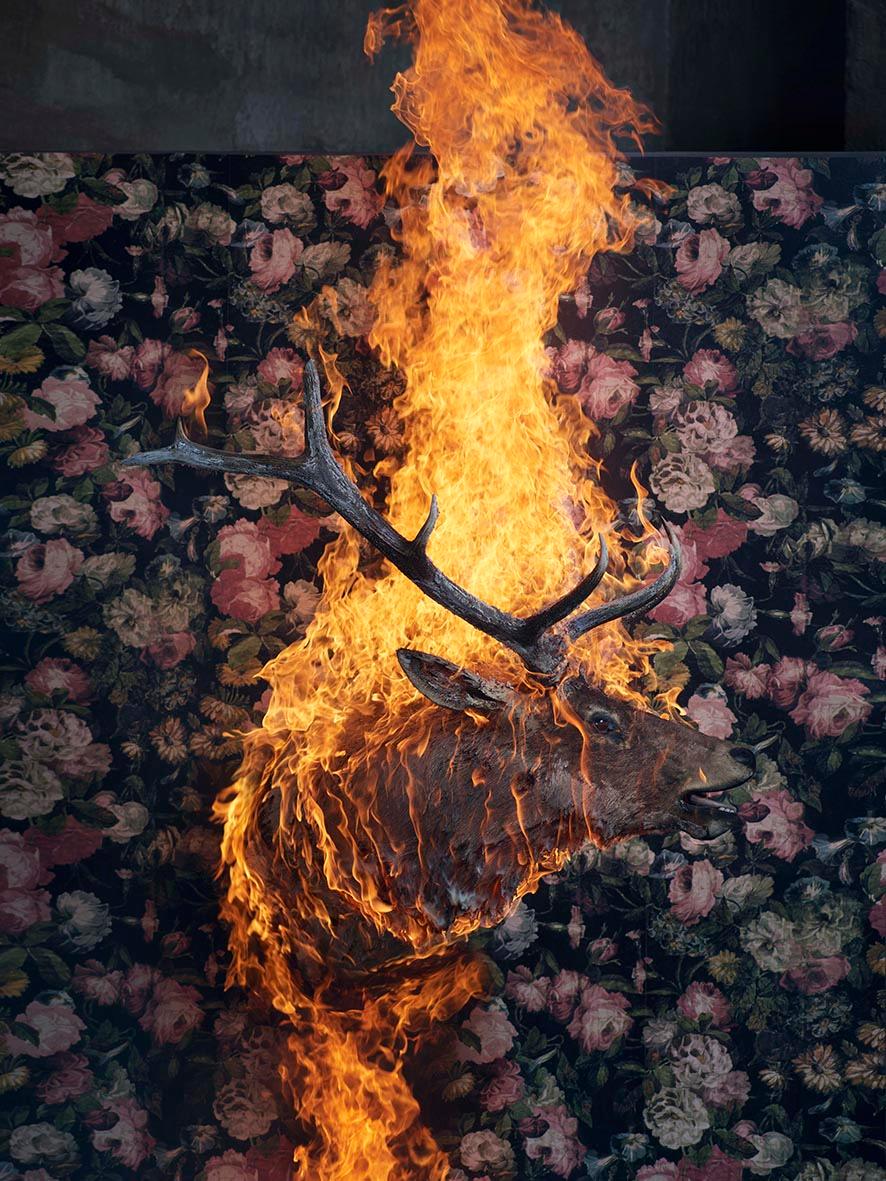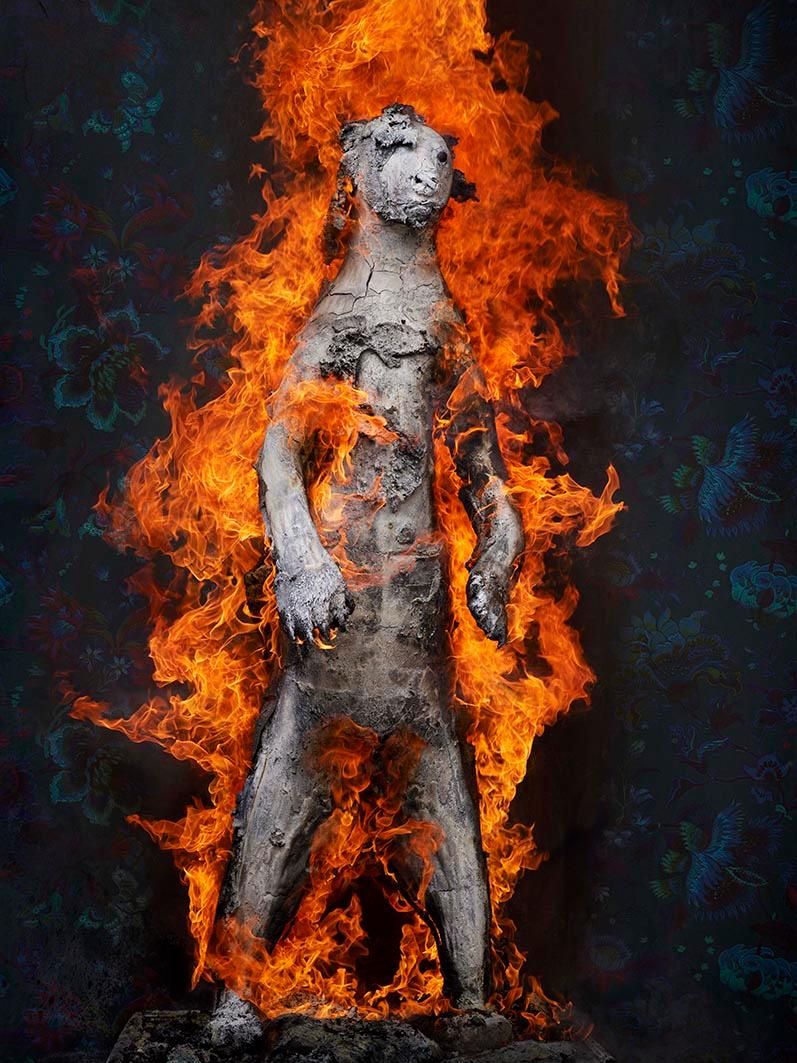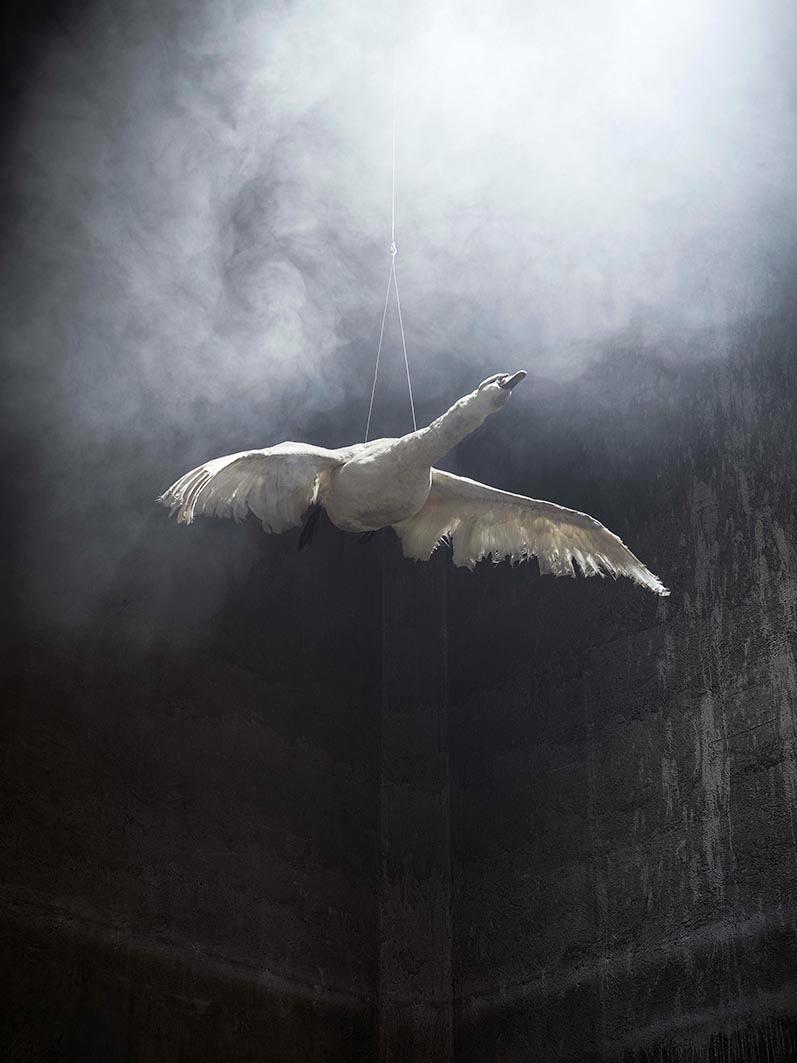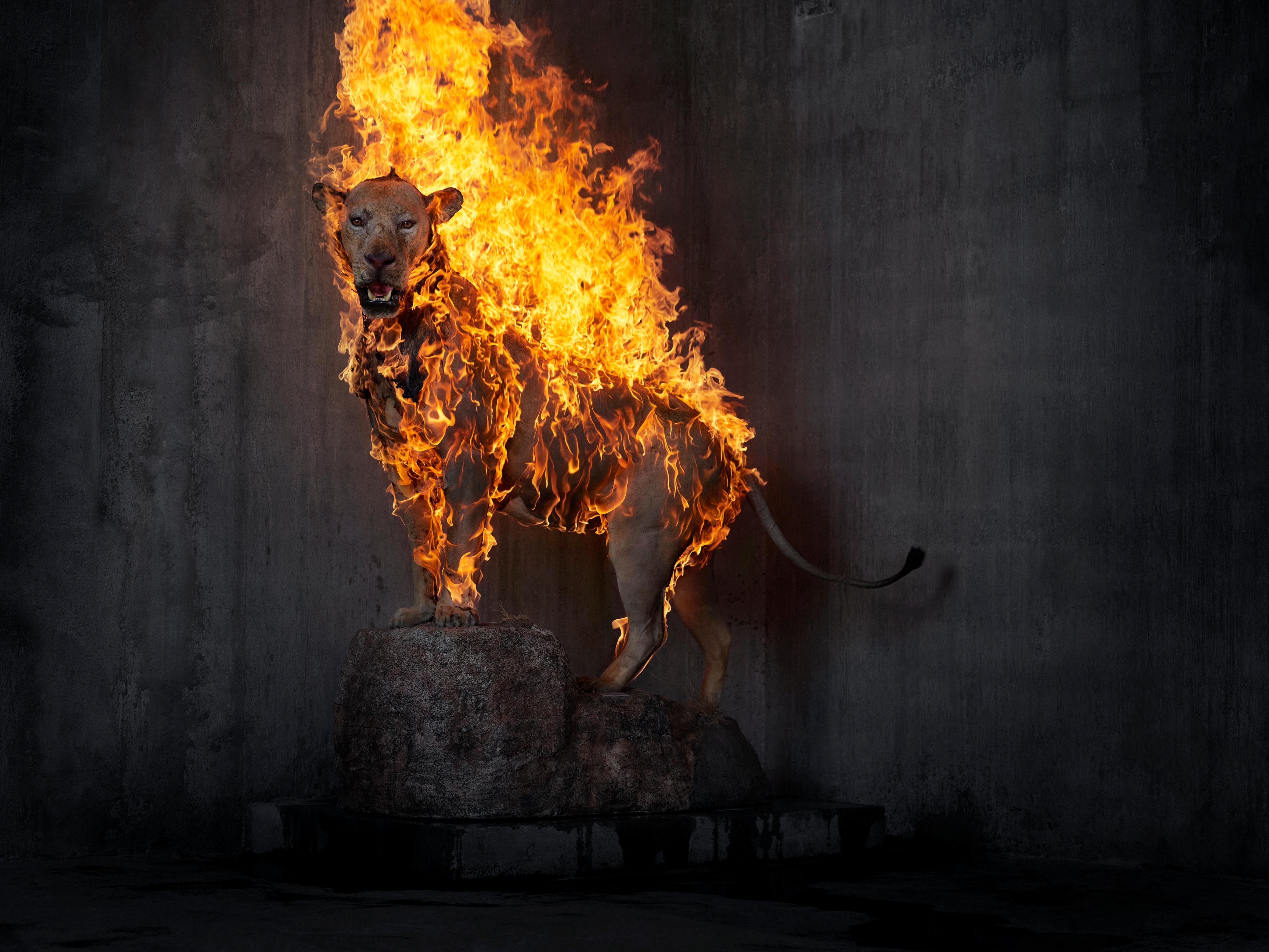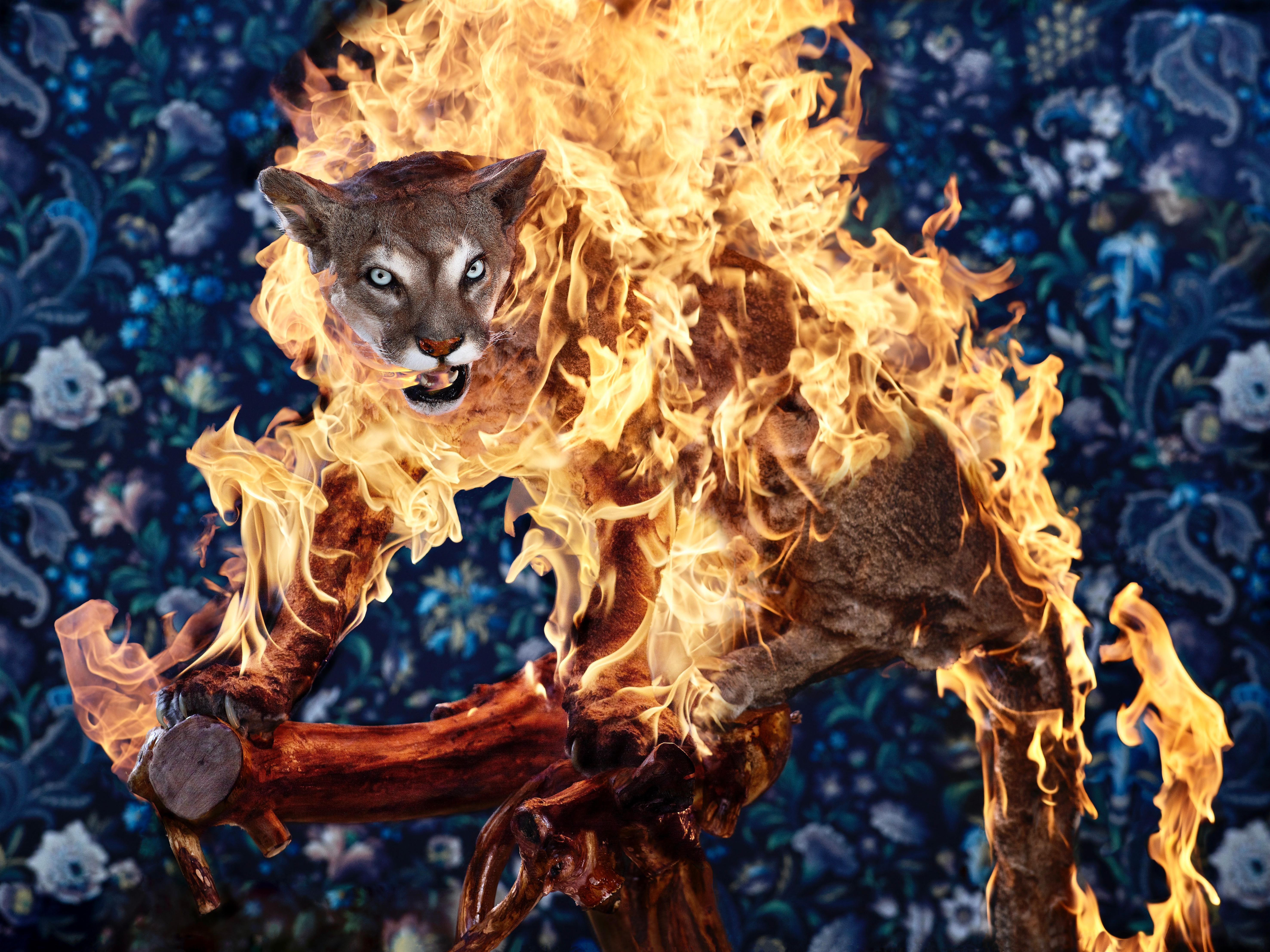Items Similar to PLAGE LEBLON, RIO DE JANEIRO, BRESIL
Want more images or videos?
Request additional images or videos from the seller
1 of 9
Jean-Christophe BéchetPLAGE LEBLON, RIO DE JANEIRO, BRESIL1999
1999
About the Item
Impression fine art sur papier mat, tirage réalisé par l'artiste
Taille de l'image : 30 x 40 cm
Tirage signé, numéroté et titré au verso
Non encadré, sans passe-partout
Cette photographie appartient à la série "Brésil" et fait partie des photographies les plus récentes du photographe.
Né en 1964 à Marseille, Jean-Christophe Béchet vit et travaille depuis 1990 à Paris.
Mêlant noir et blanc et couleur, argentique et numérique, 24x 36 et moyen format, polaroids et “accidents” photographiques, Jean-Christophe Béchet cherche pour chaque projet le “bon outil”, celui qui lui permettra de faire dialoguer de façon pertinente une interprétation du réel et une matière photographique.
Son travail photographique se déploie dans deux directions qui se croisent et se répondent en permanence. D’un côté son approche du réel le rend proche d’une forme de « documentaire poétique » avec un intérêt permanent pour la “photo de rue” et les architectures urbaines, qu’il appelle des PAYSAGES HABITÉS. En parallèle, il développe depuis plus de quinze ans une recherche sur la matière photographique et la spécificité du médium.
Depuis vingt ans, ce double regard sur le monde se construit livre par livre. Jean-Christophe Béchet est l’auteur de plus d’une vingtaine d’ouvrages. Ses photographies ont rejoint de nombreuses collections privées et publiques et sont présentées régulièrement en galerie et dans les plus grandes manifestations dédiées à la photographie, notamment aux Rencontres d’Arles (2006, 2012) et aux Mois de la Photo à Paris (2006, 2008 et 2017). Récemment, son travail a été montré à la Maison européenne de la photographie, (« Annie Ernaux & la Photographie », 2024), à la Bibliothèque nationale de France (« L’épreuve de la Matière », 2023-2024), ou encore au Salon de la Photo (2023).
Après avoir été longtemps représenté à Paris par « Les Douches la Galerie ». Jean-Christophe Béchet travaille aujourd’hui avec « La galerie des Photographes » (29 rue Keller, 75011 Paris)
- Creator:Jean-Christophe Béchet (French)
- Creation Year:1999
- Dimensions:Height: 13 in (33 cm)Width: 18.9 in (48 cm)Depth: 0.04 in (1 mm)
- More Editions & Sizes:Edition of 7Price: $859
- Medium:
- Period:
- Condition:
- Gallery Location:PARIS, FR
- Reference Number:1stDibs: LU2073214188772
About the Seller
No Reviews Yet
Vetted Seller
These experienced sellers undergo a comprehensive evaluation by our team of in-house experts.
Established in 2019
1stDibs seller since 2022
- ShippingRetrieving quote...Ships From: PARIS, France
- Return PolicyA return for this item may be initiated within 14 days of delivery.
More From This SellerView All
- Hong KongLocated in PARIS, FRTirage issu du dernier ouvrage de Jean-Christophe Béchet, Macadam Color Street Photo (Éditions Loco, 2022). "Grand spécialiste de la photographie de rue, Jean-Christophe Béchet ras...Category
2010s Figurative Photography
MaterialsDigital Pigment
- MACADAM COLOR, LA HAVANE, CUBA, 2018Located in PARIS, FRImpression fine art sur papier baryté, tirage réalisé par l'auteur Taille de l'image : 30 x 40 cm Tirage signé, numéroté et titré au verso Non encadré, sans passe-partout Cette phot...Category
2010s Figurative Photography
MaterialsPigment, Digital Pigment
- AMERICAN PUZZLE, LAS VEGAS, NEVADA, USALocated in PARIS, FRImpression fine art sur papier baryté, tirage réalisé par l'auteur Taille de l'image : 30 x 40 cm Tirage signé, numéroté et titré au verso Non encadré, sans passe-partout Cette pho...Category
21st Century and Contemporary Figurative Photography
MaterialsPigment, Digital Pigment
- Eureka, USALocated in PARIS, FRPhotographie tirée du carnet "Eureka USA" de Jean-Christophe Béchet (2018, 48 pages, 36 photos couleur éditions Trans Photographic Press). "Près de mille kilomètres (939 km pour êtr...Category
2010s Figurative Photography
MaterialsDigital Pigment
- Monument Valley, Arizona, USALocated in PARIS, FRImpression fine art sur papier baryté, réalisé par l'artiste Taille de l'image : 30 x 40 cm Tirage signé, numéroté et titré au verso Non encadré, sans passe-partout Photographie tirée du carnet "Petits paysages américains" de Jean-Christophe Béchet (2018, 48 pages, éditions Trans Photographic Press). "Aux Etats-Unis, tout est plus grand, plus fort et plus impressionnant, notamment les paysages ! Les photographies légendaires d’Ansel Adams ont structuré notre mémoire visuelle et aujourd’hui dans chaque lieu touristique, des galeries proposent des images de grand format où les couleurs saturées jouent une symphonie bruyante et kitsch. Tout le panel des artifices de la photographie contemporaine est au service d’une représentation allégorique d’un paradis perdu, d’un eden déconnecté du monde réel. Mes « petits paysages américains », de taille modeste, en noir & blanc argentique, faits au Leica...Category
Early 2000s Black and White Photography
MaterialsDigital Pigment
- Habana Song #27Located in PARIS, FRPhotographie 30x40cm de la dernière série de Jean-Christophe Béchet, Habana Song, tirée par l'auteur lui-même par impression pigmentaire, avec de superbes nuances de noir, dans un to...Category
2010s Contemporary Black and White Photography
MaterialsDigital Pigment
You May Also Like
- `Flamingo`, Oslo- `Residence of Impermanence`- bird taxidermy nature animal fireBy Christian HougeLocated in Oslo, NO`Residence of Impermanence` 2017-2019 My performance series, `Residence of Impermanence`, explores our relationship to animals, fire and Nature. Through the element of fire, I hav...Category
2010s Other Art Style Color Photography
MaterialsDigital Pigment
- `Elk`, Oslo- `Residence of Impermanence` animal elk fire nature wallpaper objectBy Christian HougeLocated in Oslo, NO90 x 120 cm Edition 7 `Residence of Impermanence` 2017-2019 My performance series, `Residence of Impermanence`, explores our relationship to animals, fire and Nature. Through the...Category
2010s Color Photography
MaterialsDigital Pigment
- `Polar Bear`, Oslo- `Residence of Impermanence` animal nature polar bear fireBy Christian HougeLocated in Oslo, NO`Residence of Impermanence` 2017-2019 My performance series, `Residence of Impermanence`, explores our relationship to animals, fire and Nature. Through the element of fire, I hav...Category
2010s Other Art Style Color Photography
MaterialsDigital Pigment
- `Swan in Flight`, Oslo- `Residence of Impermanence` -animal nature flight fireBy Christian HougeLocated in Oslo, NO`Residence of Impermanence` 2017-2019 My performance series, `Residence of Impermanence`, explores our relationship to animals, fire and Nature. Through the element of fire, I hav...Category
2010s Other Art Style Color Photography
MaterialsDigital Pigment
- `Lion` Oslo, - `Residence of Impermanence` . Signed. animal lion fire natureBy Christian HougeLocated in Oslo, NOAll available sizes & editions for each size of this photograph: 90 cm. x 120 cm. Edition 7 126 cm. x 170 cm. Edition 7 `Residence of Impermanence` 2017-2019 My performance series, `Residence of Impermanence`, explores our relationship to animals, fire and Nature. Through the element of fire, I have found a way to express myself in totemic ritualistic performance by burning decaying trophy animals. The element of fire is very symbolic. It represents both destruction and creation. Animals and fire have, in many ways, formed our culture since the dawn of Mankind. They have also served as essential symbols in myth, spirituality, art and religion. Fire has protected us and given us hope. Given us a means to evolve in all culture. In Greek mythology, remember Prometheus. In the hand of Man, fire can be anything. It is our ethics that define it. We have always mirrored ourselves in Nature. What we see staring back at us may not be the image we were hoping for. This series is a reminder to where we have come regarding our relation to Nature and the huge effects of climatechange in the Anthropocene. My work often juxtaposes the visually aesthetic and uneasiness. An underlying feeling of that which is lost often plays an important role. I like to explore work themes that emanate a cognitive dissonance in the viewer to reveal more profound truths. I regard trophy animals as symbols of Man´s vanity and presumed victory over Nature. To me, they also serve as symbols of our general attitude towards Nature. The flames gives each animal a last breath of life as it creates a new portrait. The animal is set free again, ending a symbolic circle of life. A closure if you will, both physically and existentially. The English-inspired wallpapers represent imperialism and a colonial idea from a time when we were obsessed by conquering Nature and other lands. These too are burned with the animals symbolizing a protest toward our autocracy towards Nature itself. The repetitive performance of burning each animal serves as both an offering and a liberation. This is a violent act, but also a meaningful and beautiful act to me. The animals` personality changes dramatically throughout the burning process. This cannot be planned and therefore the animals give off a sense of further individuality. In the process of burning animals, I am also taking an object of desire off the market for further sales. An act that hopefully will spark dialog our use of Nature, as well as where we want to be heading in the near future. Dialog foments change and action. I spent seven years collecting old trophy animals and taxidermy of different sorts. Many were bought through auctions, while others were given to me by hunters` or the widows of hunters for this specific project. During the following three years, I went through a somewhat cathartic process of burning and obsessively exploring the symbolism of fire and our relation to animals with my performance. The intention with my series is to connect the public to the crucial matters at hand through something tangible, personal, and symbolic. These three years of working with this series has made me so much more conscious of how delicate nature is and how we have taken it for granted for too long. A reminder of how crucial both animals, fire and nature, for our so-called progress in survival and progress. Through this process, exploring new questions and inviting a larger audience to ask their own crucial questions in the massive global changes we all are witnessing, is what I strive for. Loss of animal diversity, poaching and massive forest fires are increasing so rapidly that Nature itself is at a major turning point. A call for action is needed. Working so close to the animals in my project has been as uplifting as it has been obsessive and heartbreaking, as the animal's eye connects with you on a personal level as a human does in non-verbal communication. In 2016, the government in Kenya burned poached ivory worth an estimated 130 million dollars, making a clear statement that these tusks should only belong to a living animal. This dramatic action created meaningful dialog around the world beyond news and statistics. Fires are destroying critical areas of much-needed land vegetation, thus creating considerable effects on climate change. The meeting between Nature`s fragility and Mans` ego has shown that forests disappear, glaciers are melting, sea levels are rising and species become extinct. Humans have too easily exploited all parts of nature with our own culture and growth. In this short process, we have lost the very essence of what we are a part, and thus forget the very nature in ourselves. What can photography do to create questions regarding climate change, and help us move towards a sustainable future? In photography, we can ask important questions about changes in our surroundings and who we are—Man’s condition. Background: `Residence of Impermanence` has been exhibited at five museums and several galleries already (including a big solo show at Fotografiska, Stockholm (2019), and Arles Fotofestival (2019). Work from `Residence of Impermanence' is currently exhibited at the UCR: California Museum of Photography in Los Angeles with the exhibition `Facing Fire,` Art, Wildfire and The End of Nature in the New West.` This exhibition explores the ever-worsening Californian forest fires due to climate change. My previous environmental work has been nominated for the Prix Pictet Award on several occasions with my previous series for both Earth, Power and Fire themes. In 2005, my series `Arctic Technology` was shortlisted for the BMW Prize at Paris photo (through Scout Gallery, London). My other series has been shown in museums, including a symposium at Johnson Museum, N.Y. and been part of travelling exhibitions with WHATCOM (Museum of Washington) with the exhibition `Vanishing Ice` and a China tour on environmental issues with Three Shadows Photography...Category
2010s Color Photography
MaterialsDigital Pigment
- `Puma`, Sweden- `Residence of Impermanence`- puma fire animal nature wallpaperBy Christian HougeLocated in Oslo, NO`Residence of Impermanence` 2017-2019 90x120 cm. Edition 7 My performance series, `Residence of Impermanence`, explores our relationship to animals, fire and Nature. Through the element of fire, I have found a way to express myself in totemic ritualistic performance by burning decaying trophy animals. The element of fire is very symbolic. It represents both destruction and creation. Animals and fire have, in many ways, formed our culture since the dawn of Mankind. They have also served as essential symbols in myth, spirituality, art and religion. Fire has protected us and given us hope. Given us a means to evolve in all culture. In Greek mythology, remember Prometheus. In the hand of Man, fire can be anything. It is our ethics that define it. We have always mirrored ourselves in Nature. What we see staring back at us may not be the image we were hoping for. This series is a reminder to where we have come regarding our relation to Nature and the huge effects of climatechange in the Anthropocene. My work often juxtaposes the visually aesthetic and uneasiness. An underlying feeling of that which is lost often plays an important role. I like to explore work themes that emanate a cognitive dissonance in the viewer to reveal more profound truths. I regard trophy animals as symbols of Man´s vanity and presumed victory over Nature. To me, they also serve as symbols of our general attitude towards Nature. The flames gives each animal a last breath of life as it creates a new portrait. The animal is set free again, ending a symbolic circle of life. A closure if you will, both physically and existentially. The English-inspired wallpapers represent imperialism and a colonial idea from a time when we were obsessed by conquering Nature and other lands. These too are burned with the animals symbolizing a protest toward our autocracy towards Nature itself. The repetitive performance of burning each animal serves as both an offering and a liberation. This is a violent act, but also a meaningful and beautiful act to me. The animals` personality changes dramatically throughout the burning process. This cannot be planned and therefore the animals give off a sense of further individuality. In the process of burning animals, I am also taking an object of desire off the market for further sales. An act that hopefully will spark dialog our use of Nature, as well as where we want to be heading in the near future. Dialog foments change and action. I spent seven years collecting old trophy animals and taxidermy of different sorts. Many were bought through auctions, while others were given to me by hunters` or the widows of hunters for this specific project. During the following three years, I went through a somewhat cathartic process of burning and obsessively exploring the symbolism of fire and our relation to animals with my performance. The intention with my series is to connect the public to the crucial matters at hand through something tangible, personal, and symbolic. These three years of working with this series has made me so much more conscious of how delicate nature is and how we have taken it for granted for too long. A reminder of how crucial both animals, fire and nature, for our so-called progress in survival and progress. Through this process, exploring new questions and inviting a larger audience to ask their own crucial questions in the massive global changes we all are witnessing, is what I strive for. Loss of animal diversity, poaching and massive forest fires are increasing so rapidly that Nature itself is at a major turning point. A call for action is needed. Working so close to the animals in my project has been as uplifting as it has been obsessive and heartbreaking, as the animal's eye connects with you on a personal level as a human does in non-verbal communication. In 2016, the government in Kenya burned poached ivory worth an estimated 130 million dollars, making a clear statement that these tusks should only belong to a living animal. This dramatic action created meaningful dialog around the world beyond news and statistics. Fires are destroying critical areas of much-needed land vegetation, thus creating considerable effects on climate change. The meeting between Nature`s fragility and Mans` ego has shown that forests disappear, glaciers are melting, sea levels are rising and species become extinct. Humans have too easily exploited all parts of nature with our own culture and growth. In this short process, we have lost the very essence of what we are a part, and thus forget the very nature in ourselves. What can photography do to create questions regarding climate change, and help us move towards a sustainable future? In photography, we can ask important questions about changes in our surroundings and who we are—Man’s condition. Background: `Residence of Impermanence` has been exhibited at five museums and several galleries already (including a big solo show at Fotografiska, Stockholm (2019), and Arles Fotofestival (2019). Work from `Residence of Impermanence' is currently exhibited at the UCR: California Museum of Photography in Los Angeles with the exhibition `Facing Fire,` Art, Wildfire and The End of Nature in the New West.` This exhibition explores the ever-worsening Californian forest fires due to climate change. My previous environmental work has been nominated for the Prix Pictet Award on several occasions with my previous series for both Earth, Power and Fire themes. In 2005, my series `Arctic Technology` was shortlisted for the BMW Prize at Paris photo (through Scout Gallery, London). My other series has been shown in museums, including a symposium at Johnson Museum, N.Y. and been part of travelling exhibitions with WHATCOM (Museum of Washington) with the exhibition `Vanishing Ice` and a China tour on environmental issues with Three Shadows Photography...Category
2010s Other Art Style Color Photography
MaterialsDigital Pigment

